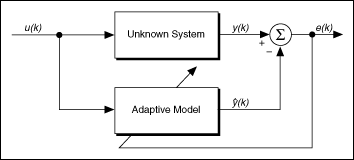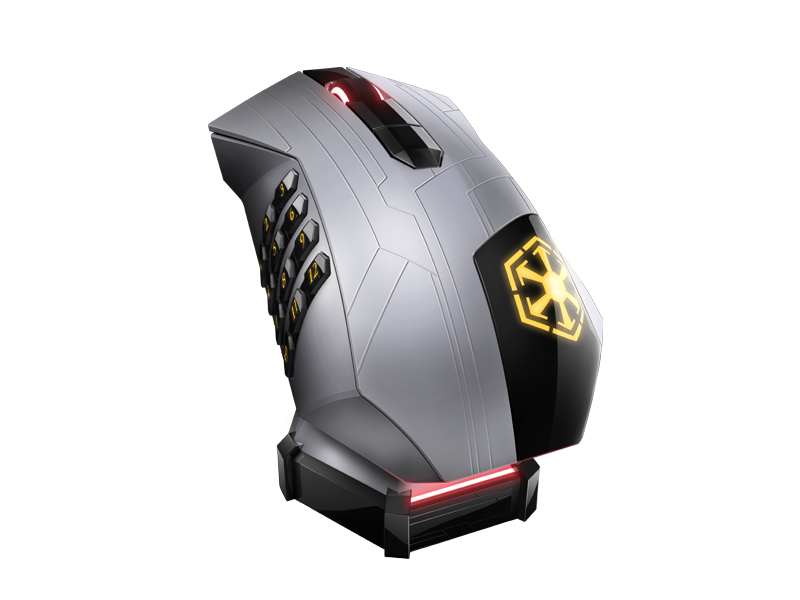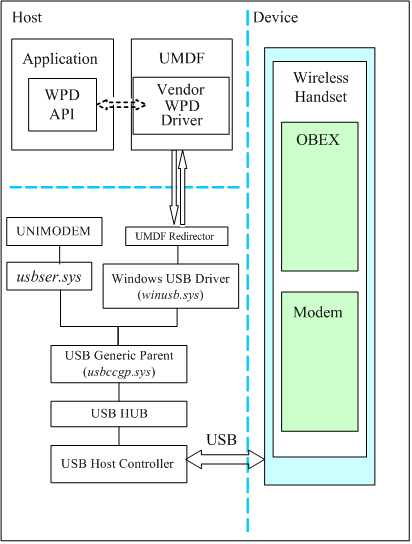
When you plug the device into your USB, Windows will look for the associated driver, if it cannot find this driver then you will be prompted to insert the driver disc that came with your device. Common USB Device errors are ‘ usb port not working ‘, ‘device descriptor request failed error’ or ‘bugcodeusbdriver’ issues. In the Arduino IDE when the CH340 is connected you will see a COM Port in the Tools Serial Port menu, the COM number for your device may vary depending on your system. Older Windows Driver Version and Instructions. Download the Windows CH340 Driver; Unzip the folder. If you are running a 64Bit Windows: – run the SETUP64.EXE installer.
| This article will guide you on how to install ALDL USB cable on your Windows system. It will then successfully work with OBD-I software (like award-winning TOAD) and your car. (If this step is missed, then OBD software is not going to work. So it's CRUCIAL that you follow below steps).
Other Resources: Where to buy ALDL Cable: USA / Australia |
STEP 1: Refer To Guide Included With Your ALDL Cable
Most ALDL cables come with a CD (drivers) and installation instructions. Refer to their instructions first.
Otherwise, proceed to Step 2.

Download ALDL Cable Drivers here.
Then unextract the file anywhere on your computer.
STEP 3: Plugin ALDL to Any USB Port On Your Computer
Once you plug-in the cable into your computer — Windows Vista, 7, 8 will likely install drivers automatically. Without you having to do anything. In which case you can immediately connect other end to the car, load up the OBD software and start scanning/tuning.

Windows XP will ask you to specify/browse location of where drivers are found. Choose the same folder where you extracted drivers in STEP 2 above. It'll then install and you're all setup!
If driver install fails, then you can retry inside Control Panel. Here's how..
- Windows Vista/7/8: Control Panel » System » Device Manager
- Windows XP: Control Panel » System » 'Hardware' tab » Device Manager
You'll then see a device similar to 'USB Serial Port' under either 'Other devices' or 'Ports (COM & LPT)'.
Right-click and choose 'Update Driver Software'. Like this:
Then select the folder in Step 2 above.
Recursion Port Devices Driver Download For Windows 8.1

STEP 4: Discover What Port Number Your ALDL Cable is Using
Go to Control Panel.
- Windows Vista/7/8: Control Panel » System » Device Manager
- Windows XP: Control Panel » System » 'Hardware' tab » Device Manager
Expand 'Other devices' or 'Ports (COM & LPT)'. Whichever contains 'USB Serial Port'.
Next to 'USB Serial Port' — you'll see a number. Keep note of that number. EG: COM5.
You'll have to specify that inside OBD software, so that it can recognize the cable.
All that's left now is to plug the other end of ALDL cable to your cars port.
Launch OBD1 software like TOAD — specify within the software your ALDL COM port number (as per Step 4 above), and Connect!
Test If ALDL Cable Interface is Communicating with Windows

Recursion Port Devices Driver Download For Windows 10
Use this ALDL tester software to verify that your ALDL cable is recognized and properly installed to Windows.
It'll also tell you what COM port number (as discussed in Step 4 above), your ALDL cable is using.
Recursion Port Devices Driver Download For Windows Xp
HPE Intel ixgben Driver for VMware vSphere 6.7 By downloading, you agree to the terms and conditions of the Hewlett Packard Enterprise Software License Agreement.
Note: Some software requires a valid warranty, current Hewlett Packard Enterprise support contract, or a license fee. | Type: | Driver - Network | | Version: | 2018.11.13(27 Nov 2018) | | Operating System(s): | VMware vSphere 6.7 | | Multi-part download | | File name: | cp035298.compsig (2.0 KB) | | File name: | cp035298.zip (326 KB) |
This product contains the driver for the HPE Intel ixgben Adapters running under VMware vSphere 6.7. Upgrade Requirement:
Optional - Users should update to this version if their system is affected by one of the documented fixes or if there is a desire to utilize any of the enhanced functionality provided by this version. This product now supports Gen10 servers. To ensure the integrity of your download, HPE recommends verifying your results with the following SHA-256 Checksum values: | 172bc1b7f515a74d585973f6a09a79457d7da40f3420b265fd9e89eb0d69c639 | cp035298.zip | | 346247cd11c1cf9ebe661cadf7fa364494009a67cacd853d7afee26e0717aafd | cp035298.compsig |
Reboot Requirement:
Reboot is required after installation for updates to take effect and hardware stability to be maintained. Installation:
To use Smart Update Manager from the HPE Service Pack for ProLiant Remote Online: - Place the SPP on a USB key using the HPE USB Key Creator Utility.
- Place the desired driver to be updated in the directory /SPP20xxxxx/hp/swpackages on the USB key.
- Mount the USB key on a remote server running Windows or Linux.
- Change directory to /hp/swpackages and execute ./hpsum.
- Select the 'Next' button.
- Click 'Add Single Target.'
- Enter the IP or DNS address of the ESXi host to be updated.
- Enter the ESXi host credentials (root or administrator username and password).
- Follow Smart Update Manager steps and complete the update.
To update the driver using VMware tools: - Unzip the HPE component zip file to extract the driver zip file.
- Copy the driver zip file extracted in the previous step to the VMware host server.
- Unzip the driver zip file to obtain the driver offline bundle zip file.
- Use VMware vSphere Update Manager (VUM) or esxcli commands to install the driver offline bundle.
- Refer to VMware documentation for information on VUM and the esxcli commands for more information.
End User License Agreements:
HPE Software License Agreement v1
Upgrade Requirement:
Optional - Users should update to this version if their system is affected by one of the documented fixes or if there is a desire to utilize any of the enhanced functionality provided by this version. Important:
This component is intended to be used by HPE applications. It is a zip file that contains the same driver deliverable available from the vmware.com and the HPE vibsdepot.hpe.com webpages, plus an HPE specific CP0xxxxx.xml file. HPE recommends the firmware provided in HPE Intel Online Firmware Upgrade Utility for VMware, version 3.9.0 or later, for use with this driver. Notes:
This product contains driver version 1.7.1. Supported Devices and Features:
These drivers support the following network adapters: - HP Ethernet 10Gb 2-port 560FLB Adapter
- HP Ethernet 10Gb 2-port 560FLR-SFP+ Adapter
- HP Ethernet 10Gb 2-port 560M Adapter
- HP Ethernet 10Gb 2-port 560SFP+ Adapter
- HP Ethernet 10Gb 2-port 561FLR-T Adapter
- HP Ethernet 10Gb 2-port 561T Adapter
- HPE Ethernet 10Gb 2-port 562FLR-T Adapter
- HPE Ethernet 10Gb 2-port 562T Adapter
This component is intended to be used by HPE applications. It is a zip file that contains the same driver deliverable available from the vmware.com and the HPE vibsdepot.hpe.com webpages, plus an HPE specific CP0xxxxx.xml file. HPE recommends the firmware provided in HPE Intel Online Firmware Upgrade Utility for VMware, version 3.9.0 or later, for use with this driver. Version:2020.09.14 (5 Oct 2020) Upgrade Requirement:
Optional - Users should update to this version if their system is affected by one of the documented fixes or if there is a desire to utilize any of the enhanced functionality provided by this version. This product corrects an issue which notification from Link Partner when executed Link Flow Control settings. (20 Dec 2019) Upgrade Requirement:
Optional - Users should update to this version if their system is affected by one of the documented fixes or if there is a desire to utilize any of the enhanced functionality provided by this version. This product corrects a recursion termination condition so that recursion correctly ends in the case of PCIe link down.
This product addresses an issue where the ixgben driver has high CPU overhead when an SFP+ module is absent. This product no longer supports ProLiant Blade servers and devices. Those servers and devices are now supported by the HPE Blade Intel ixgben Driver for VMware vSphere 6.7. (12 Aug 2019) Upgrade Requirement:
Optional - Users should update to this version if their system is affected by one of the documented fixes or if there is a desire to utilize any of the enhanced functionality provided by this version. This product addresses an issue where a VF loses connection. This product now correctly shows the OROM version. (2 Apr 2019) Upgrade Requirement:
Optional - Users should update to this version if their system is affected by one of the documented fixes or if there is a desire to utilize any of the enhanced functionality provided by this version. This product corrects a problem where excessive logging of an issue “(unsupported) Device 10fb does not support flow control autoneg” crashes the vCenter. (27 Nov 2018) Upgrade Requirement:
Optional - Users should update to this version if their system is affected by one of the documented fixes or if there is a desire to utilize any of the enhanced functionality provided by this version. This product now supports Gen10 servers. (29 Jun 2018) Upgrade Requirement:
Optional - Users should update to this version if their system is affected by one of the documented fixes or if there is a desire to utilize any of the enhanced functionality provided by this version. Initial release. | Type: | Driver - Network | | Version: | 2018.11.13(27 Nov 2018) | | Operating System(s): | |
DescriptionThis product contains the driver for the HPE Intel ixgben Adapters running under VMware vSphere 6.7. EnhancementsInstallation InstructionsTo ensure the integrity of your download, HPE recommends verifying your results with the following SHA-256 Checksum values: | 172bc1b7f515a74d585973f6a09a79457d7da40f3420b265fd9e89eb0d69c639 | cp035298.zip | | 346247cd11c1cf9ebe661cadf7fa364494009a67cacd853d7afee26e0717aafd | cp035298.compsig |
Reboot Requirement:
Reboot is required after installation for updates to take effect and hardware stability to be maintained. Installation:
To use Smart Update Manager from the HPE Service Pack for ProLiant Remote Online: - Place the SPP on a USB key using the HPE USB Key Creator Utility.
- Place the desired driver to be updated in the directory /SPP20xxxxx/hp/swpackages on the USB key.
- Mount the USB key on a remote server running Windows or Linux.
- Change directory to /hp/swpackages and execute ./hpsum.
- Select the 'Next' button.
- Click 'Add Single Target.'
- Enter the IP or DNS address of the ESXi host to be updated.
- Enter the ESXi host credentials (root or administrator username and password).
- Follow Smart Update Manager steps and complete the update.
To update the driver using VMware tools: - Unzip the HPE component zip file to extract the driver zip file.
- Copy the driver zip file extracted in the previous step to the VMware host server.
- Unzip the driver zip file to obtain the driver offline bundle zip file.
- Use VMware vSphere Update Manager (VUM) or esxcli commands to install the driver offline bundle.
- Refer to VMware documentation for information on VUM and the esxcli commands for more information.
Release NotesEnd User License Agreements:
HPE Software License Agreement v1
Upgrade Requirement:
Optional - Users should update to this version if their system is affected by one of the documented fixes or if there is a desire to utilize any of the enhanced functionality provided by this version. Important:
This component is intended to be used by HPE applications. It is a zip file that contains the same driver deliverable available from the vmware.com and the HPE vibsdepot.hpe.com webpages, plus an HPE specific CP0xxxxx.xml file. HPE recommends the firmware provided in HPE Intel Online Firmware Upgrade Utility for VMware, version 3.9.0 or later, for use with this driver. Notes:
This product contains driver version 1.7.1. Supported Devices and Features:
These drivers support the following network adapters: - HP Ethernet 10Gb 2-port 560FLB Adapter
- HP Ethernet 10Gb 2-port 560FLR-SFP+ Adapter
- HP Ethernet 10Gb 2-port 560M Adapter
- HP Ethernet 10Gb 2-port 560SFP+ Adapter
- HP Ethernet 10Gb 2-port 561FLR-T Adapter
- HP Ethernet 10Gb 2-port 561T Adapter
- HPE Ethernet 10Gb 2-port 562FLR-T Adapter
- HPE Ethernet 10Gb 2-port 562T Adapter
ImportantThis component is intended to be used by HPE applications. Download nec scsi & raid devices driver download. It is a zip file that contains the same driver deliverable available from the vmware.com and the HPE vibsdepot.hpe.com webpages, plus an HPE specific CP0xxxxx.xml file. HPE recommends the firmware provided in HPE Intel Online Firmware Upgrade Utility for VMware, version 3.9.0 or later, for use with this driver. Revision HistoryVersion:2020.09.14 (5 Oct 2020) Upgrade Requirement:
Optional - Users should update to this version if their system is affected by one of the documented fixes or if there is a desire to utilize any of the enhanced functionality provided by this version. This product corrects an issue which notification from Link Partner when executed Link Flow Control settings. (20 Dec 2019) Upgrade Requirement:
Optional - Users should update to this version if their system is affected by one of the documented fixes or if there is a desire to utilize any of the enhanced functionality provided by this version. This product corrects a recursion termination condition so that recursion correctly ends in the case of PCIe link down.
This product addresses an issue where the ixgben driver has high CPU overhead when an SFP+ module is absent. This product no longer supports ProLiant Blade servers and devices. Those servers and devices are now supported by the HPE Blade Intel ixgben Driver for VMware vSphere 6.7. (12 Aug 2019) Upgrade Requirement:
Optional - Users should update to this version if their system is affected by one of the documented fixes or if there is a desire to utilize any of the enhanced functionality provided by this version. This product addresses an issue where a VF loses connection. This product now correctly shows the OROM version. (2 Apr 2019) Upgrade Requirement:
Optional - Users should update to this version if their system is affected by one of the documented fixes or if there is a desire to utilize any of the enhanced functionality provided by this version. This product corrects a problem where excessive logging of an issue “(unsupported) Device 10fb does not support flow control autoneg” crashes the vCenter. (27 Nov 2018) Upgrade Requirement:
Optional - Users should update to this version if their system is affected by one of the documented fixes or if there is a desire to utilize any of the enhanced functionality provided by this version. This product now supports Gen10 servers. (29 Jun 2018) Upgrade Requirement:
Optional - Users should update to this version if their system is affected by one of the documented fixes or if there is a desire to utilize any of the enhanced functionality provided by this version. Initial release. |
|
Recursion Port Devices Driver Download For Windows 7
Legal Disclaimer: Raytek rsb driver manual. Products sold prior to the November 1, 2015 separation of Hewlett-Packard Company into Hewlett Packard Enterprise Company and HP Inc. may have older product names and model numbers that differ from current models. |
|





